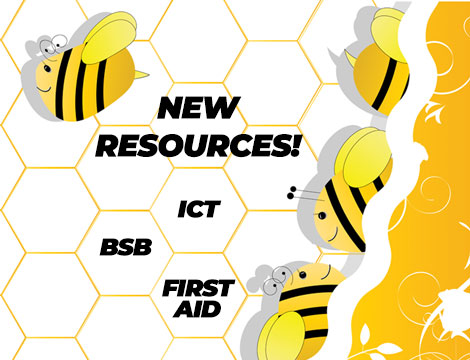To refresh yourself, please find Part 1 here
The majority trainers are unaware of the value of having an accurate and up-to-date trainer matrix available as a road map to the training planned, designed, and offered to learners and ultimately also for the audit and verification purposes. Part of a training organisation’s responsibility is to assist trainers to keep these up to date. You may fall behind if you do not remain on top of compliance criteria, and you may not know it until your trainers and assessors are unable to prepare or assess the students they have been assigned.
We have discussed a number of most critical aspects of a compliant Trainer Matrix in our last article. They were:
- What is a Trainer Matrix?
- What are the variety of uses of using a Trainer Matrix?
- What are the ASQA guidelines related to trainer and assessor matrix?
- Why should you retain sufficient evidence related to trainers and assessors?
In this part, we will discuss:
- The definition of a trainer matrix according to regulatory guidelines
- ASQA Guidelines on trainer matrixes.
- What must be included in a trainer’s matrix.
- Who must complete the skills matrix in your RTO?
- The trainer file and checklist
The definition of a trainer matrix according to regulatory guidelines
The trainer matrix feature allows trainers and RTO administration to track and manage evidence that will support the requirements of vocational competencies, current industry skills, VET knowledge and skills and professional development (clauses 1.13 – 1.16 under Standards for RTOs 2015).
The trainer matrix, therefore, provides evidence of the qualifications and industry currency of trainers involved in program delivery, mapped to each unit they deliver and assess. A trainer’s matrix should be developed when a trainer is initially assigned to deliver and assess a unit/s. Existing trainers assigned should update their matrixes at least annually to record additional industry experience, trainer qualifications changes/upgrades and relevant professional development.
ASQA Guidelines on trainer matrixes:
There is no prescribed way of recording evidence of verification of trainer and assessor qualifications; this is an operational decision for each RTO. For example, RTO’s may choose to record the verification within their RTO’s trainer and assessor matrix. (FAQs)
What must be included in a trainer’s matrix.
From the explanation above, it is evident that a skills matrix must include sufficient and unambiguous information:
-
- The document should be appropriately labelled and version controlled.
- The RTO’s name, code and contact details should be included
- Trainer name and contact details
- Department name and contact details, if applicable
- Information if it is for “initial registration or appointment as a trainer/assessor” or “annual update”.
- Information and details about the qualifications or unit/s of competency the trainer/assessor is training and/or assessing at the RTO.
- The Trainer/Assessor must include their work experience and qualifications that enable them to train and assess each unit of competency delivered. This information should be verified by bona fide qualification documentation, a resume, references and information which may be checked to confirm authenticity.
-
- Vocational competencies at least to the level being delivered and assessed;
- Current industry skills directly relevant to the training and assessment being provided; and
- Current knowledge and skills in vocational training and learning that informs their training and assessment
-
- You must record your vocational education and training (VET) work experience. Details and description of the duties, the name of the employer or organisation, the position held, and date/s and time worked.
- You must record your vocational education and training qualification and equivalence. Name of the course achieved, the institution from where it is obtained, and the dates received. This section can also be used for writing down other certificates and licenses obtained.
- You must record your training and assessment (TAE or equivalent) credentials and qualifications (according to clause 1.14 and clause 1.15). Please also include the following information:Training and Assessment Credentials Required – Trainers
On or prior to 30 June 2019 (no equivalence)- TAE40110 or TAE40116* or
- TAE40110 + one of the following Units of Competency: TAELLN401A/TAELLN411 and
- one of the following Units of Competency: TAEASS502A/TAEASS502B/TAEASS502 or a diploma or higher-level qualification in adult education OR
- Diploma related to adult education OR
- Higher qualification in adult education
From 1 July 2019 (no equivalence)
- TAE40116* or TAE40110 + one of the following Units of Competency: TAELLN401A/TAELLN411 and
- one of the following Units of Competency: TAEASS502A/TAEASS502B/TAEASS502 or a diploma or higher-level qualification in adult education OR
- Diploma related to adult education OR
- Higher qualification in adult education
Training and Assessment Credentials Required – Assessors
On or prior to 30 June 2019 (no equivalence)
- Assessor Skill Set (TAESS00001 or TAESS00011 Assessor Skill Set) or
- TAE40110 or TAE40116* or
- TAE40110 + one of the following Units of Competency: TAELLN401A/TAELLN411 and
- one of the following Units of Competency: TAEASS502A/TAEASS502B/TAEASS502 or a diploma or higher-level qualification in adult education OR
- Diploma related to adult education OR
- Higher qualification in adult education
From 1 July 2019 (no equivalence)
- Assessor Skill Set (TAESS00001 or TAESS00011 Assessor Skill Set) or
- TAESS00001 plus one of the following Units of Competency: TAEASS502A/TAEASS502B/TAEASS502 or
- TAE40116* or TAE40110 + one of the following Units of Competency: TAELLN401A/TAELLN411 and
- one of the following Units of Competency: TAEASS502A/TAEASS502B/TAEASS502 or a diploma or higher level qualification in adult education OR
- Diploma related to adult education OR
- Higher qualification in adult education
You must, therefore, have a Training and Assessment Qualifications section on your skills matrix and options to select the checkboxes or let the Trainer/Assessor write the training and assessment qualification/s they have acquired.
- Provide details of how you meet the vocational competence requirements of each unit you are delivering or assessing. This may be through holding the same unit of competency, holding an older version of the same unit and verifying there are no gaps, holding an older version of the same unit and providing details of how gaps have been addressed, other formal qualifications, professional development activities, evidence from work in the industry, etc.
Please ensure all areas of the unit of competency are addressed through the evidence provided. Provide examples and explain each criterion to ensure you have addressed all areas of the unit of competency. If the units are not equivalent (e.g. a Statement of Attainment for the specific unit/course has not been submitted), a mapping document must be provided to demonstrate how the units have been mapped to ensure vocational competency. In some cases, such mapping document may be provided by the RTO. - You must have a section to comply with the professional development requirements mentioned under Vet Quality Framework (VQF) Reference: SRTO 1.16
Professional development means activities that develop and/or maintain an individual’s skills, knowledge, expertise and other characteristics as a trainer or assessor. This includes both formal and informal activities that encompass vocational competencies, the currency of industry skills and knowledge and practice of vocational training, learning and assessment, including competency-based training and assessment. Examples of professional development activities include:- participation in courses, workshops, seminars, conferences, or formal learning programs;
- participation in mentoring, professional associations or other learning networks;
- personal development through individual research or reading of publications or other relevant information;
- participation in moderation or validation activities; and
- participation in industry release schemes.
Identify any areas requiring professional development to address in the upcoming year. Where possible, identify where professional development may be undertaken. Once professional development has occurred, remove from this section and put the details in the appropriate sections of the skills matrix.
“The future professional development needs” must include the following professional development sessions:
- Knowledge about the units of competency
- Vocational training and learning knowledge
- Industry currency
- Assessment and/or learner resource validation
- Competency-based training and assessment
- E-learning/ technology and industry changes and their effect on VET training and assessment
- You must include the evidence of current knowledge and skills in vocational education and training to inform training and assessment practices (Vet Quality Framework Reference: SRTO 1.13c) The section may include the following fields: Activity, Organisation/person provided by, Dates Undertake, Time involved, Type of Activity, Knowledge or skills gained
- You must include a declaration and verification section to confirm that the information provided on the Trainer Matrix and any related documentation is true and accurate. You give permission to your employer to verify the accuracy of any information provided.In short, a valid trainer matrix includes the following information:
- Training Product/s delivered and/or assessed;
- Mapping to the compliance and regulatory standards (Trainers and assessors’ clause 1.13 to 1.16 and Individuals working under the supervision of a trainer clause 1.17 to 1.20.);
- Ongoing study towards completion of formal qualifications
- PD and Industry currency in the last 12 months;
- Employment history;
- Positions held, employer, dates of employment;
- Relevant industry experience/training;
- Current appointments, memberships of professional/industry associations;
- Professional development planned; and
- Have a declaration and verification checklist
It is also recommended that all resumes/CVs are verified for currency and authenticity through the undertaking of reference checks.
Who must complete the skills matrix in your RTO?
It is the responsibility of the trainer/assessor to confirm that the information presented in the skills matrix is complete, authentic and valid. Your organisation can follow a joint-effort to complete the skills matrix, where the administration or compliance department can develop the template, complete all training package criteria, and then you as a trainer and assessor review all information, fill in the gaps and ensure every statement is true, complete and valid.
The trainer file and checklist
An RTO must hold valid files for all Trainers and Assessors (this includes files for contractors and employees). A valid file includes the following information:
- Compliance checklist
- Trainer file checklist
- Employment contract
- A signed and dated copy of employment contract and offer letter
- A signed copy of position description
- CV/ Resume
- A current copy of the trainer/assessor’s CV (usually updated on an annual basis)
- Qualifications/ licenses/ checks
- Evidence of vocational competencies
- Evidence of industry currency
- Evidence of VET currency
- Training and assessment qualification
- Vocational licenses/ tickets/ cards (as required)
- National police clearance check
- Working with children check
- Performance management
- Staff key performance indicators and appraisal (at least an annual basis)
- Trainer observation forms (observation by RTO staff)
- Trainer feedback forms (from students)
- Induction
- Staff induction checklist
- Staff induction session
- Staff handbook
- Direct supervision
- Direct supervision plan and documentation (as required)
- HR/ Payroll/ Leave forms
- Personal details form with bank details
- Tax file declaration
- Superannuation details
- Business name confirmation (for contractors)
- ABN and GST (for contractors)
- Insurances
- Copy of professional indemnity insurance
In our next editions, we will discuss:
- What should be included in the trainer matrix template (With explanation)
- How to complete a trainer matrix template
- Review and manage trainer matrix tool
References:
https://www.asqa.gov.au/resources/fact-sheets/meeting-trainer-and-assessor-requirements






















